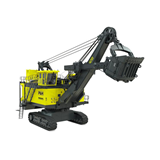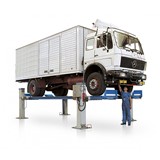The resources boom has been hailed as responsible for growth in exports, growth in income, growth in jobs, and part saviour of Australia from the effects of the global financial crisis (GFC) and overseas recessions.
There's little doubt that the mining boom has contributed significantly to economic growth and prosperity. Minerals and energy as a proportion of total WA output grew from 18 per cent in 2000 to almost 30 per cent by 2011. Exports of minerals and energy as a proportion of total merchandise exports in WA rose from 70 per cent in 2000 to 95 per cent by 2011 – valued at over $106 billion.
However, far less clear are the effects of the mining boom on employment in WA. Has the boom created a lot of jobs for Western Australians? Or has it taken workers away from other industries, making it difficult for them to attract labour, and created jobs for interstate and overseas migrants, rather than increasing domestic employment?
Not that creating jobs for migrants isn't a good thing, but if that is mainly what is happening, then the mining sector's effect on the local job market may have been misrepresented.
So let's take a look. From Australian Bureau of Statistics figures it's very clear that there's has been a huge growth in jobs in the mining industry in WA. By early 2012, the mining sector was employing over 7 per cent of WA's workforce, which compares with around 3.6 per cent in 2000
By comparison, at the national level, mining currently employs less than 2 per cent of the workforce. Also remember that official statistics don't always measure all employment involved in the mining sector. For example, any workers employed by contractors who are not mining companies, may not be included. So there's no doubt that the mining sector has created jobs.
But have jobs been created for WA workers? Been created for interstate workers? WA (and for that matter, Australia) was probably at, or close to, 'full employment' from the early-to-mid-2000s until the economic downturn of 2008/09. Therefore the significant increases in the labour supply could not have come from local sources.
This also means that the labour shortages reported by the WA mining sector (and in some other industries) is real. Of course, what economists define as full employment does not mean that there is a zero rate of unemployment – it is means that an unemployment rate of perhaps around 4 per cent still exists, although the exact rate is subject to debate.
'Full-employment' occurs when the only types of unemployment that exist are due to people looking for their first jobs, moving between jobs, or when people's skills or skill levels don't match the jobs that are available.
For WA, the unemployment rate has averaged around 4 per cent since the early 2000s, and hovered at around 3 per cent between 2006 and 2008, even reaching close to 2 per cent late in 2008 according to estimates by the Australian Bureau of Statistics (ABS). This means that people who wouldn't normally find work were employed, which implies that the mining booms and its associated economic growth has played a part in generating local jobs, either directly or indirectly.
However, most of the new jobs created in mining have not been filled by the local workforce. Further, most of the new jobs created in mining have not been filled by workers coming from other states. The extent of the rise in overseas migration from 2004 to 2009 is clearly very large – an increase of more than 225 per cent over a 5 year period! There is no doubt that a large proportion of the new jobs have been filled by overseas migration.
What is also interesting is the federal government's policy of substantially reducing Australia's overall migration intake following the GFC. While it may have meant short-term political gain for the federal government, for WA it was at the expense of the skilled workforce required for a growing economy.
But what about those claims that regularly do the rounds, that WA, and specifically the mining sector, has been taking – indeed 'stealing' – large numbers of skilled workers from other states and territories, creating labour shortages and putting upward pressure on wages? This is largely incorrect.
The movements in interstate net migration generally track the economic cycles in the WA economy. But the latest mining boom has so far not led to growth rates of interstate net migration that are any larger than at other periods of economic growth.
There is some fly-in/fly-out occurring from other states that is not measured in migration data, but even when taking this into account, the net number of workers and people coming into WA from other states is small compared to overseas migration.
It's also useful to look at the labour needs of the mining sector. The Chamber of Minerals and Energy of WA (CME) has said that there will be a large increase in the demand for labour up until 2015. This is for the construction phase of new projects, which need around 10 times as many workers as does the subsequent operation phase
Therefore temporary migration of skilled workers may well suit the current and near future needs of the mining sector. To this end, in July 2011 the federal government re-classified Perth as 'regional' to allow migrants under the Regional Sponsored Migration Scheme to live in Perth and fly-in/fly out to mining regions. The Enterprise Migration Agreements, announced in 2011, focuses specifically on temporary migration agreements for the resource sector.
The final question here is whether or not the growth in jobs in the mining sector has taken workers away from other sectors in WA, creating labour shortages? The answer is to some degree, probably 'yes'.
The CME has said that their industry can attract semi-skilled or unskilled workers from other industries, due to their ability to offer higher wages. The higher relative wages offered to skilled workers by the mining sector is also highly likely to have attracted some workers from other sectors.
ABS estimates of average weekly total full-time male earnings, show that weekly earnings were highest in the mining sector at $2342.60, which is around 50 per cent more than the average across all industries.
So in answer to the questions about the effects of the mining boom on employment in WA, it has clearly created many jobs. While it has taken some labour from other sectors, and some from other states, a large proportion of the labour has come from overseas migration.
A version of this article appeared in WA Business News on 24 May 2012.


-160x160-state_article-rel-cat.png)





-160x160-state_article-rel-cat.png)

















